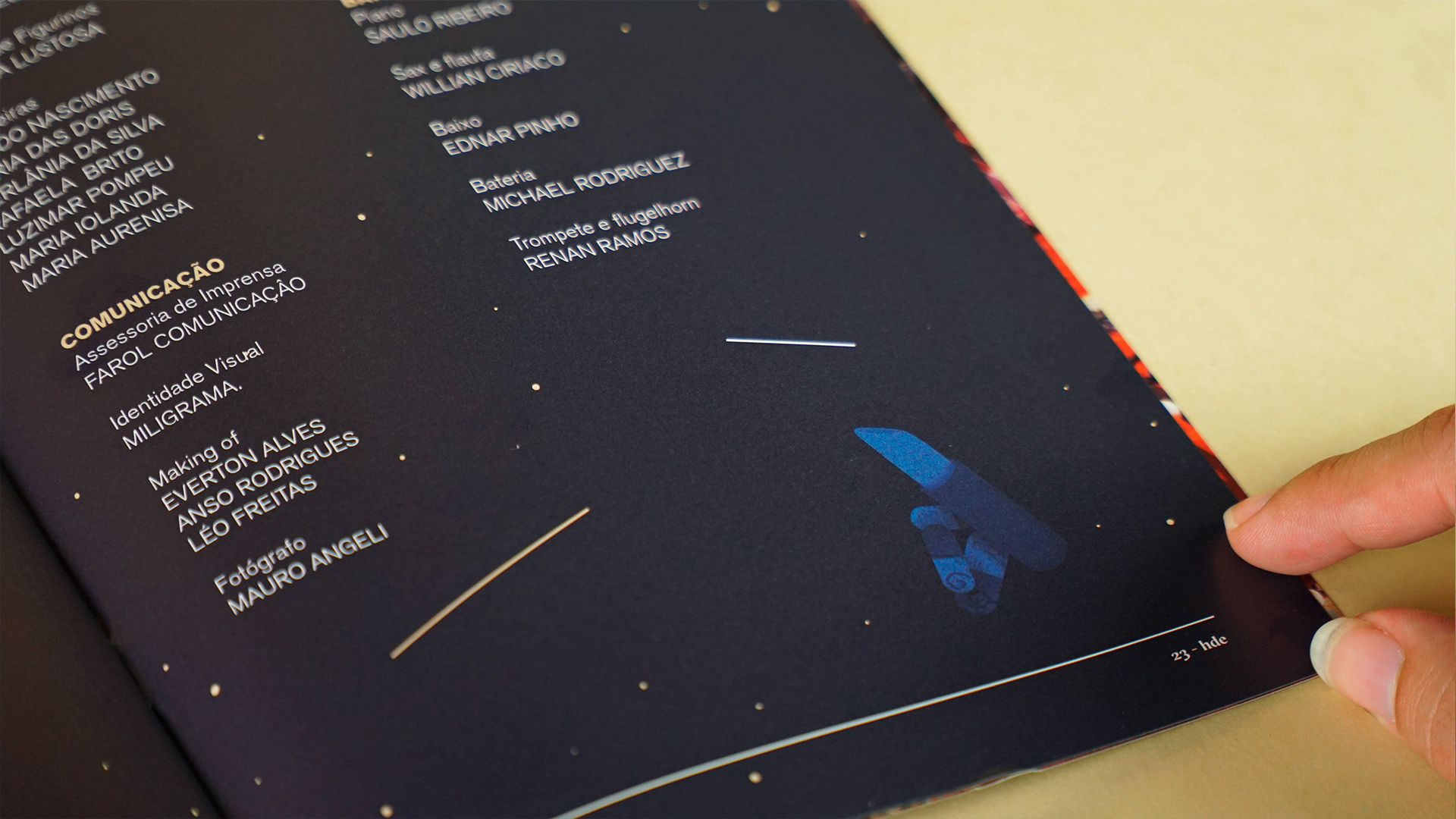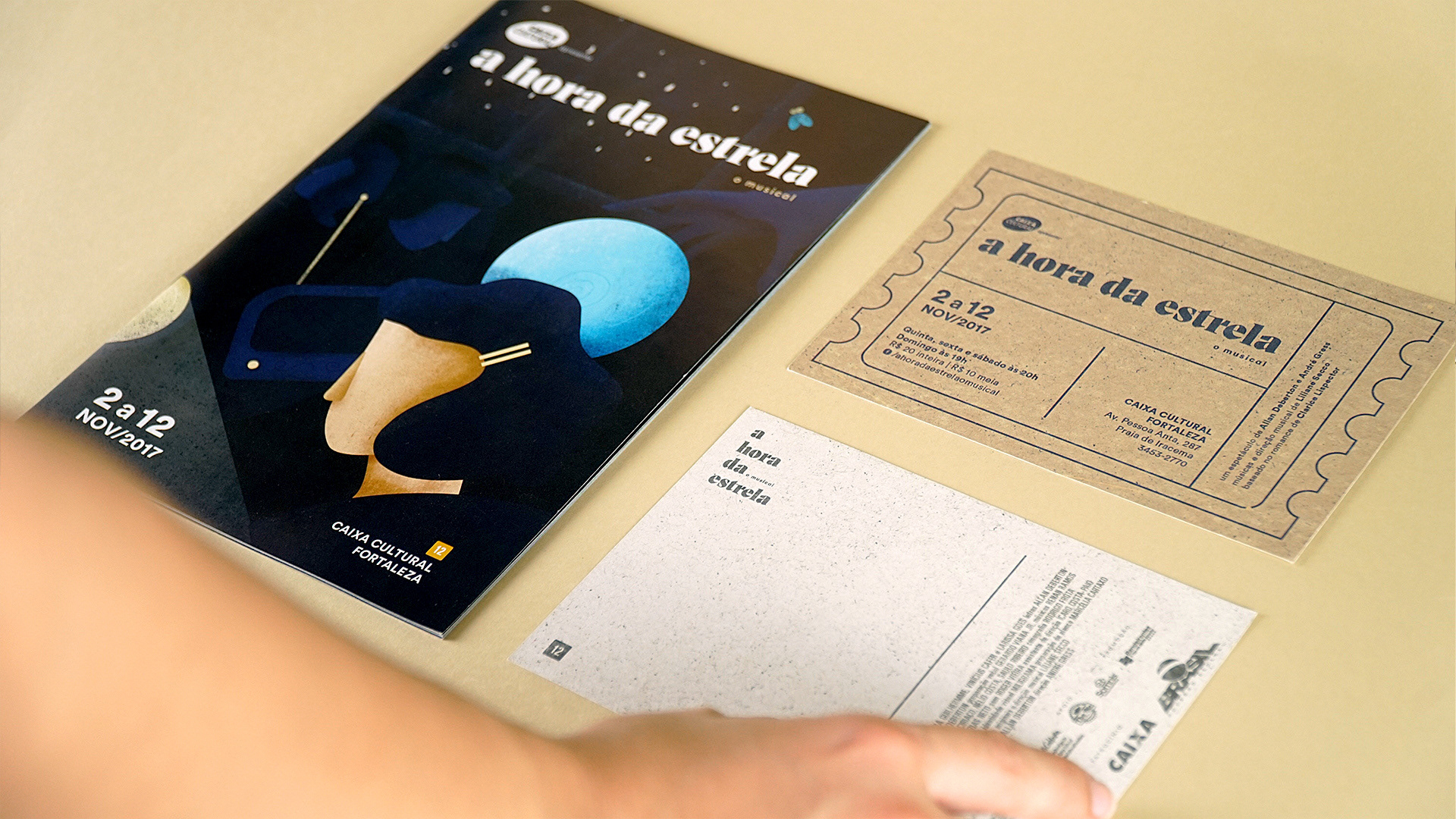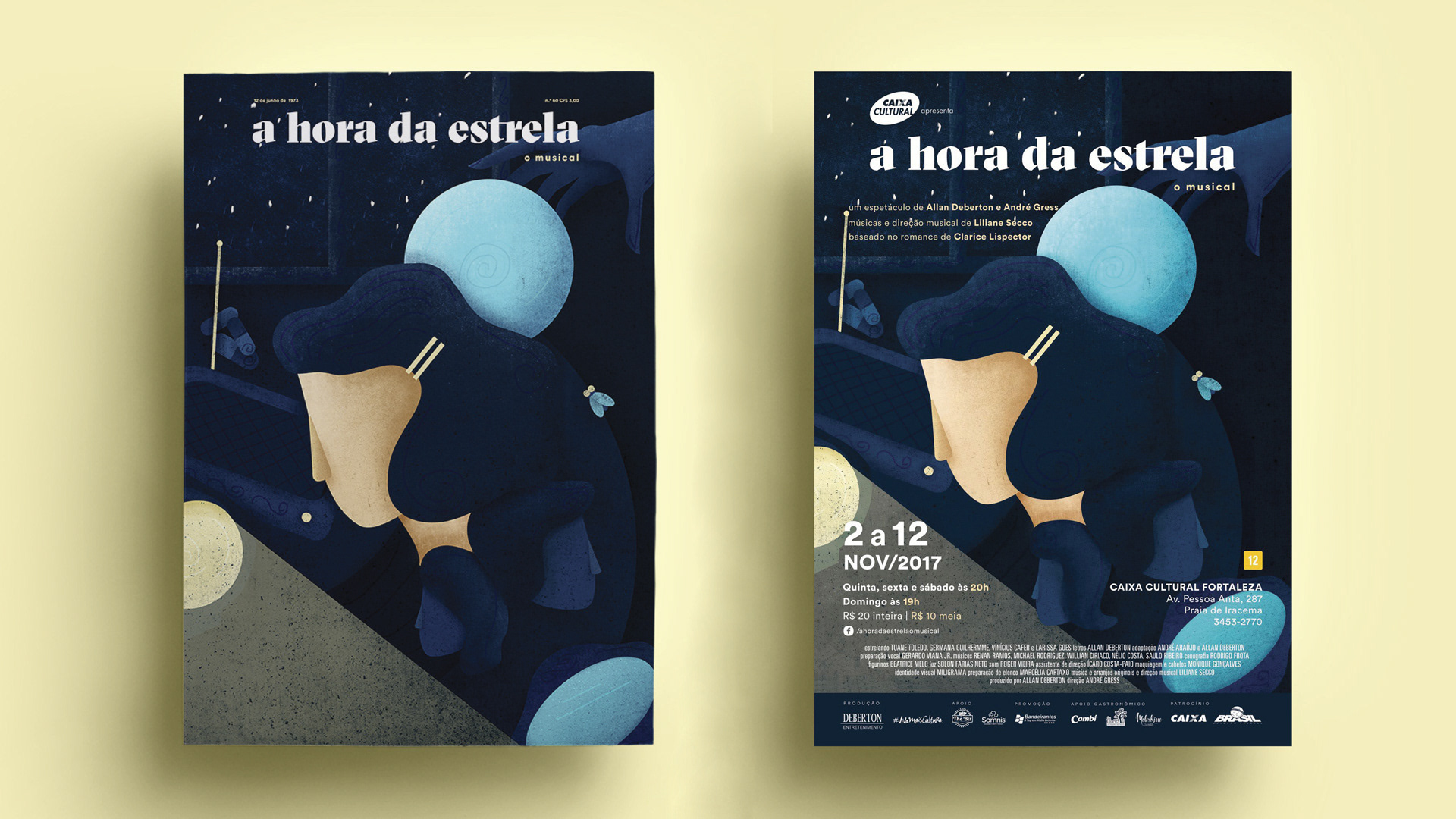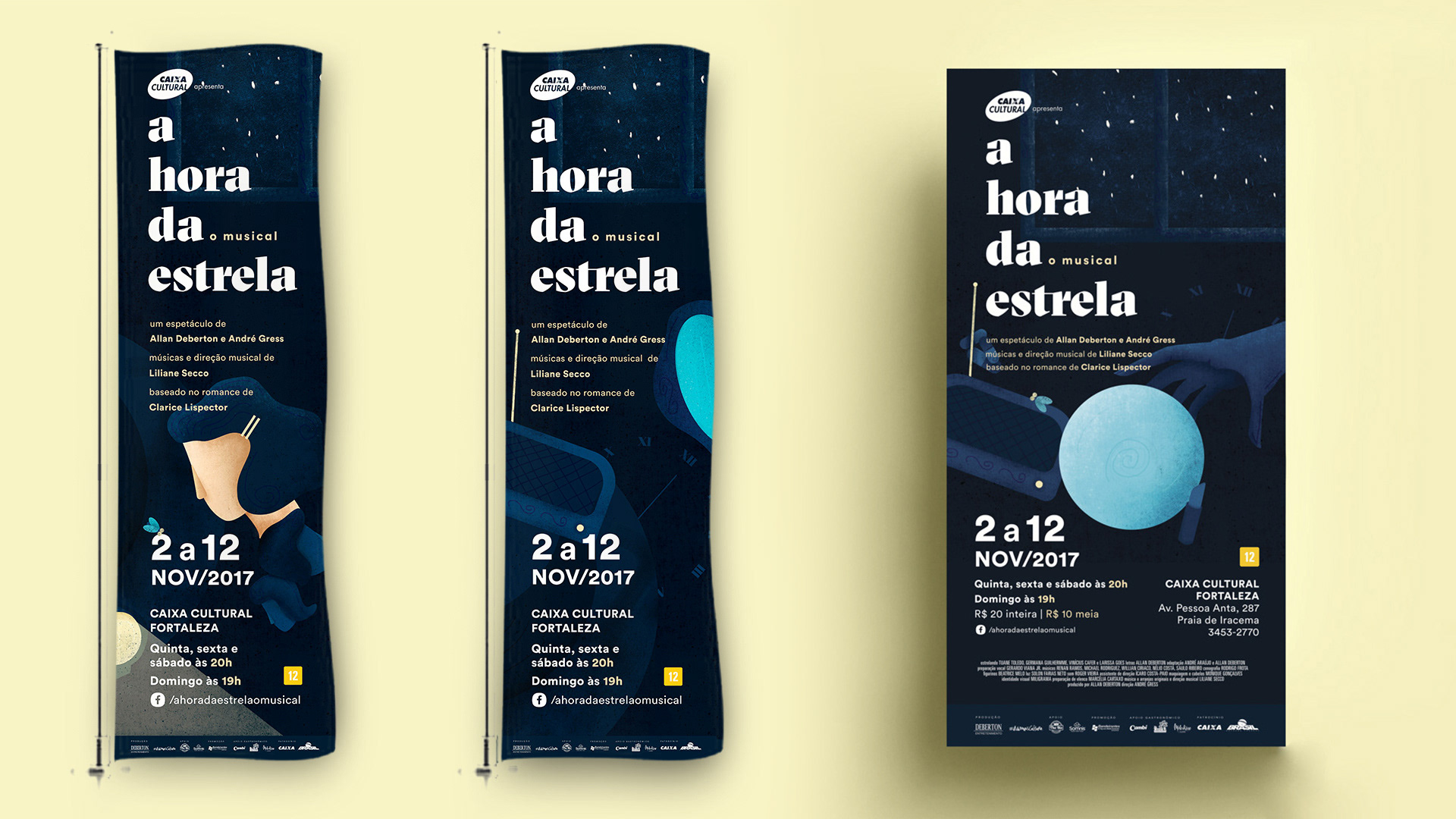



A Hora da Estrela
- 2017
EN | US
A Hora da Estrela is a classic of Brazilian literature, written in 1977 by Clarice Lispector. The romance was initially adapted for the big screens in 1985, and in 2017 it was created its musical version for the theater, idealized and produced by Allan Deberton and directed by André Gress. In their words: Transforming the project for the theater was a big challenge, so we did an adapted version of the piece. The story and the personality of the characters were preserved, but the context was updated. Macabéa (the lead character) is from Ceará instead of Alagoas, and she has a job at a call-center. Instead of moving from Northeast to Rio de Janeiro, she now moves from the countryside to the city (the capital of the state, Fortaleza).
The idea tried to put together various elements from the original piece of Clarice with a new contemporary touch. Therefore, the conception and graphic style chosen aimed to mix a slightly dark and bucolic side, through colors and textures, with a new modern side, through vectorial illustration. The poster aims to be on the limit between friendly and pessimistic. Particular elements pointed in the book, the movie and the play were chosen to communicate to the public the feeling the surrounds the main character, Macabéa. We worked with a serif typographic family with strong and straight lines, typical from old classic newspapers, as if Macabéa's story could be in one of those headlines.
The idea tried to put together various elements from the original piece of Clarice with a new contemporary touch. Therefore, the conception and graphic style chosen aimed to mix a slightly dark and bucolic side, through colors and textures, with a new modern side, through vectorial illustration. The poster aims to be on the limit between friendly and pessimistic. Particular elements pointed in the book, the movie and the play were chosen to communicate to the public the feeling the surrounds the main character, Macabéa. We worked with a serif typographic family with strong and straight lines, typical from old classic newspapers, as if Macabéa's story could be in one of those headlines.
PT | BR
A Hora da Estrela é um clássico da literatura brasileira, escrito em 1977 por Clarice Lispector. O romance foi, inicialmente adaptado para o cinema, em 85 e, em 2017, tem a sua tradução para o teatro em forma de musical, idealizado pelo cineasta de Russas/CE, Allan Deberton e dirigido pelo ator André Gress. Nas palavras dos idealizadores: Transpor o projeto para o teatro foi um grande desafio, optando por fazer uma releitura da obra. Foram preservados a trama e as características das personagens, mas todo o contexto foi atualizado. Em vez de Alagoana, nossa Macabéa agora é cearense e tem um emprego em um call-center. Ao invés do percurso Nordeste - Rio de Janeiro, ela agora faz o percurso interior - cidade grande.
A ideia buscou aliar elementos da obra de Clarice com o toque diferenciado e contemporâneo da obra teatral. Para tanto, a concepção e estilo gráfico escolhidos buscaram unir um lado levemente sombrio e bucólico, através da paleta de cores e texturas, a um lado atual e repaginado, pelo estilo da ilustração vetorial. Elementos particulares citados na obra, no filme e na peça teatral foram escolhidos de forma a transmitir ao público o "feeling" que rodeia a história da personagem principal, Macabéa. De origem humilde, a personagem demonstra paradoxalmente diversas complexidades inerentes às existência humana, retratadas de forma simples porém profunda. Superficial, porém dotada de significado. Buscando apontar essas dualidades, o cartaz procura ficar no limite entre o amigável e o "pessimista". Na tipografia, foi trabalhada uma família serifada porém com traços fortes e retos, bem clássicos das tipografias de jornal antigos, como se a história de Macabéa pudesse estar estampada nas capas daqueles veículos.
CREDITS
MILIGRAMA DESIGN
Creative Direction: Rodrigo Gondim, Rebeca Prado
Design Lead: Lívia Perdigão
Design: Lívia Perdigão, Rodrigo Gondim, Marina Rodrigues and José Victor Ferrer
Illustration: Lívia Perdigão
Creative Direction: Rodrigo Gondim, Rebeca Prado
Design Lead: Lívia Perdigão
Design: Lívia Perdigão, Rodrigo Gondim, Marina Rodrigues and José Victor Ferrer
Illustration: Lívia Perdigão